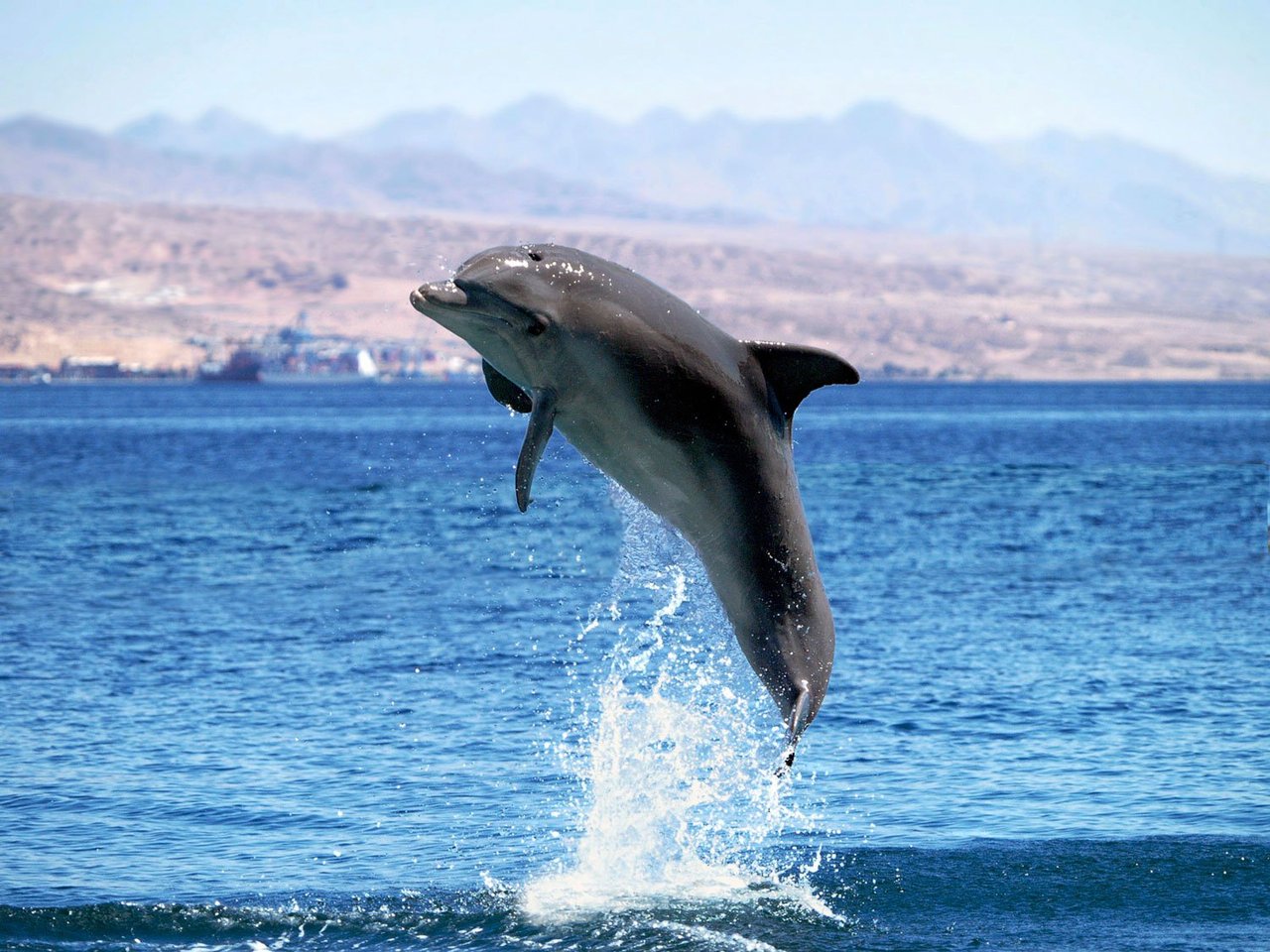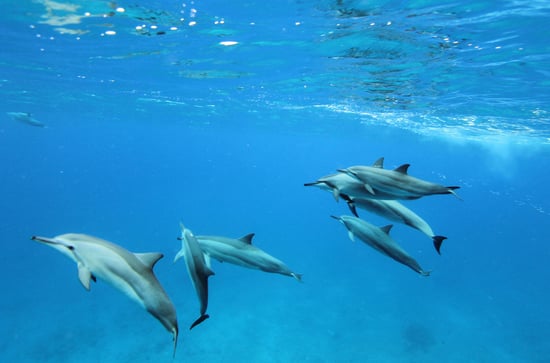
Dolphin facts
Common name: Dolphin
Scientific name: Delphinus
Distribution: Temperate and tropical waters worldwide
Here are some dazzling facts about dolphins!
Dolphins are warm-blooded marine mammals that breathe air. They are highly intelligent, sociable and playful animals found throughout the world’s waters – in oceans, estuaries, along the coast, and even in freshwater!
Ocean dolphins range in size from the smallest, Māui dolphin, to the largest known dolphin, the Orca or killer whale.
Dolphins are extremely powerful animals. Some species can swim up to speeds of 50kph and regularly dive to depths of up to 55 metres to forage for their favourite foods of fish and squid.
Travelling and hunting in pods, dolphins have big territories, on average around 100km².
Dolphins help keep our environment in balance by eating other animals. Scientists also see dolphins as indicators of the health of our oceans.
Dolphins communicate in many different ways – including squeaking, clicking and whistling. Each dolphin has a unique whistle – it helps them recognize each other – meaning whistles work very much like human names. They also use high-pitched clicking sounds for echolocation – to help them navigate and find food. The clicks hit objects in the water and then bounce back as echoes. This helps dolphins work out what and where objects are.
Despite what some people think, dolphins don’t communicate by smiling when they are happy. The ‘smile’ on their face is simply their jaw shape.

Dolphins are sentient beings – they think, feel, and have unique personalities
- Dolphins communicate their emotions in many different ways:
- If a dolphin is feeling frustrated, angry or aggressive, they may slap their tails, head and the underside of their body against the water, whilst twisting their body into an S-shape.
- If a dolphin is feeling positive, they may rub their pectoral area on surfaces or other dolphins, and perform slow, close synchronous swimming with others.
- Dolphins swim in circles, swim fast, and perform social swimming (close and synchronous) when they are feeling positive, but fast swimming can occur in stressful situations too, so it is not always clear cut.
- Dolphins blow doughnut-shaped bubbles when they are feeling frustrated or in agnostic situations in the wild.
- Dolphins emit a ‘victory squeal’ when they catch their prey, which is thought to be an expression of pleasure.
- Dolphins display more emotional reactions when they see something negative on their left side, compared with on their right side.
- Each dolphin has their a signature whistle, that is unique to them. They can also communicate information about their emotional state through their whistles.
- White-beaked dolphins in a rehabilitation centre have helped humans to care for Harbor porpoises. In one instance, a dolphin spontaneously cooperated with humans to herd a Harbor porpoise towards a veterinary treatment and feeding area. In another instance, two dolphins showed altruistic behaviour by assisting newly arrived Harbor porpoises with swimming.
